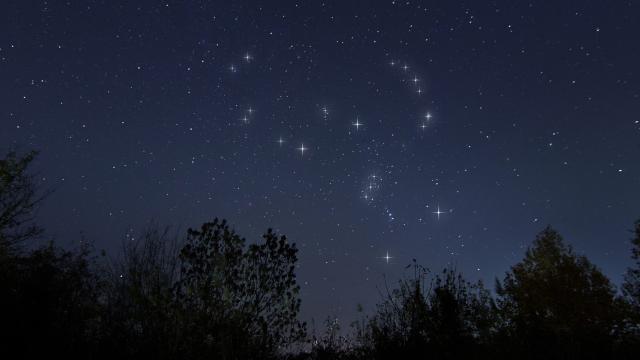As a child, my mother taught me how to spot Orion and the Big Dipper in the night sky. As an adult, those are still the only two constellations I can find on my own. If you’re in a similar position but want to expand your constellation repertoire, you have a better chance of doing so for the rest of September if you’re in the Northern Hemisphere, during which time you can use Orion’s belt as a way to locate Sirius, the brightest star in the sky, and part of the Canis Major constellation. Here’s how to find it.
Use Orion to find Sirius and Canis Major
First things first: Find Orion. One of the most distinctive features of the constellation is the short, straight row of relatively bright stars that comprise the hunter’s belt. If directions will be a help, it’s in the south to southeastern part of the sky.
Here’s what to do next, according to Deborah Byrd at EarthSky:
Just draw a line through Orion’s Belt and extend that line toward the horizon. You’ll easily spot Sirius, the sky’s brightest star.
Sirius is in the constellation Canis Major the Greater Dog. It’s often called the Dog Star.
She goes on to explain that although Venus and Jupiter are both brighter than Sirius, “you simply can’t mistake either planet for Sirius in the September morning sky.” That’s because Venus is not currently visible, thanks to the sun’s glare, and Jupiter sets before Sirius rises.
[referenced id=”938580″ url=”https://www.lifehacker.com.au/2020/08/download-nasas-new-batch-of-stunning-images-of-mars-for-free/” thumb=”https://www.gizmodo.com.au/wp-content/uploads/sites/4/2020/08/17/e3kqzxiuqeklwxem6rib-300×169.jpg” title=”Download NASA’s New Batch of Stunning Images of Mars for Free” excerpt=”It has been 15 years since NASA launched their Mars Reconnaissance Orbiter (MRO), and it continues to provide us with spectacular images of the Red Planet. To celebrate this anniversary, NASA has released a new batch of images from the MRO, including some of the most detailed shots we’ve seen…”]
Your best shot at spotting Sirius using this method will come in the predawn morning sky throughout the rest of September. In the coming months, Sirius will make its appearance in the evening sky instead. For now, using Orion’s belt is a simple way to find Sirius and, in turn, the Canis Major constellation.
[referenced id=”973969″ url=”https://www.lifehacker.com.au/2020/08/how-to-find-a-truly-dark-location-for-the-best-photos-of-the-night-sky/” thumb=”https://www.gizmodo.com.au/wp-content/uploads/sites/4/2020/08/29/iycjiwn8fbvozftzpbv9-300×168.jpg” title=”How to Find a Truly Dark Location for the Best Photos of the Night Sky” excerpt=”For the past few months, we’ve spent quite a bit of time outside in the evenings, taking in the night sky. We’ve had a few memorable space-related moments this year — including a once-every-6,000-years comet and a bunch of meteor showers — and it has been something free to do…”]

Leave a Reply
You must be logged in to post a comment.